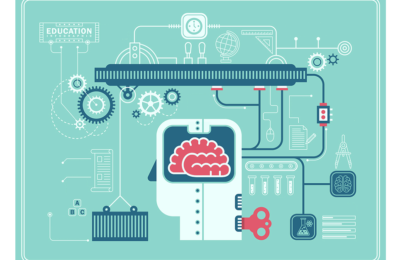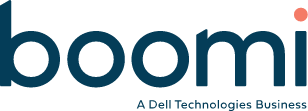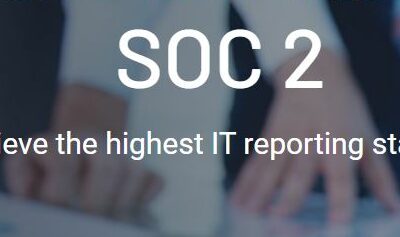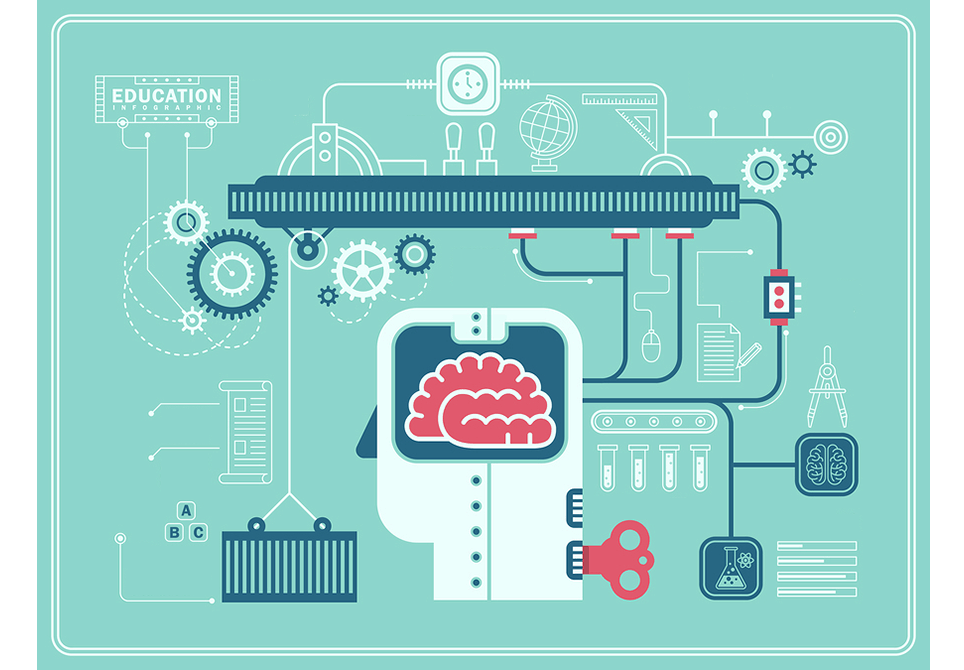EnlightenEd
Solving Data Integration Challenges for the Constantly Connected Student

This is the first in a series of posts discussing critical aspects of the Educause report “Top 10 IT Issues 2020: The Drive to Digital Transformation Begins.”
Although Educause’s annual top ten list of higher ed IT issues was released months before covid disruptions began to work their way into higher ed, its findings and predictions have managed to hold true – and the need to address them has in fact been accelerated due to the changes the pandemic brought on.
One of the key considerations the report focused on was the need for colleges and universities to build a truly student-centered campus in order to attract and retain students.
Prior to the pandemic, this was already a daunting feat – one that meant catering to a demographic used to a ubiquitous connection, integrating multiple devices and operating systems into a seamless experience.
Now, with so much more of the college experience migrating online, it’s even more daunting – and even more crucial to the success of both students and universities.
What is a Student-Centered Virtual Campus?
According to the Educause report, a student-centered campus is focused on creating a student services ecosystem to support the entire student life cycle, from prospecting to enrollment, learning, job placement, and continuing education. The university must approach this from a student’s point of view. The university should make attempts to satisfy the student’s needs, expectations of a seamless digital experience, and future professional goals.
This digital transformation, although inevitable, has been hastened by the current pandemic. It has shown administrators, students, and professors that enabling a seamless learning environment for students is critical as we continue along with our technological evolution. A seamless experience will attract more students and help drive student retention and success. But it does not stop there.
At N2N, we believe in a virtual, student-centered campus that works on any mobile device or desktop environment. We believe that a student should be able to access every resource – whether they are learning resources or administrative resources from a simple application, without the need for multiple logins or applications on the student’s device.
The model needs to incorporate not just learning modalities but must be present with the student through his/her entire campus lifecycle. The model should support student services like billing, financial aid, library, and even cafeteria services directly from this holistic virtual campus module.
At N2N, we are committed to the end-to-end student experience, that begins at recruitment and follows through application, acceptance, financing, learning, student success, graduation, and beyond.
Considering all the departments and disparate systems the above entails, that is quite a challenge for any institution.
An Adaptable Student-Centered Campus System
In addition to the pure technological challenges of combining siloed systems, there is the challenge of future planning. For example, universities were once centers of synchronous learning. But recent worldwide events have shown that this model is no longer sustainable. The incorporation of virtual learning into the traditional college experience is no longer optional for academic institutions. Some institutions are now 100% virtual, but most institutions now support hybrid learning or flex learning to support students and their learning preferences.
Looking beyond the current pandemic, and projecting forward – we believe that students will need more flexibility from their educational institutions going forward, and the academia needs to adapt to succeed in this new student-centric world.
It will be imperative that leadership at institutions choose a set of tools that can be adapted to support whichever learning modalities it may be called on to try. Beyond modalities, leadership must also be able to adapt and scale their systems to integrate new tools for the ever-growing and ever-evolving demand for that seamless online experience.
In a previous blog post we discussed how the N2N Illuminate platform is a solution that allows university systems to easily add and remove any tools they decide on quickly, easily, and affordably, integrating them into one seamless ecosystem.
Contact us to find out how we can help you transition into a student-centered campus.
More EnlightenEd Entries
EnlightenEd
Vision 2020 – Rise of the Machines to Save Higher Education

According to NCES, the 6-year graduation rate for first-time, full-time undergraduate students who began seeking a bachelor’s degree at 4-year degree-granting institutions in fall 2011 overall was 60 percent.
This statistic raises several issues – the obvious one is the fact that 40% of these students are dropping out of college and left with life-long debt. To make things worse, college dropouts generally earn $21,000 less per year than college grads, according to College Atlas. Another issue is the fact that it’s taking six years to complete a 4-year degree. In this current age of machine learning and predictive analytics – is there anything institutions can do to alleviate this crisis?
Our every entertainment whim is catered to by smart technology, with platforms powered by Artificial Intelligence, like Pandora and Amazon. These intelligent recommender platforms analyze our choices and behavior to recommend precisely the music, books, and even the groceries that we want before we even knew we wanted them.
Businesses can target their audiences online with pinpoint accuracy, taking advantage of Facebook and Google’s algorithms, and then continually refine their marketing campaigns in real-time based on the massive amounts of actionable data they’re presented with.
But when it comes to higher ed, which we look to as the formative experience of every young adult’s life, preparing them for their future careers and shaping the course of our nation?
We’re still dependent on people and paper, and there are limited applications of technology to solve the student success problem.
It just doesn’t make sense.
The world of education needs to be just as customized, targeted, predictive, and data-driven as the worlds of business and entertainment – perhaps even more so.
Providing students with the exact support and information they need to make the best choices for their college careers, and getting that same data into the hands of their advisors so they can jump in at precisely the right time with additional support as needed, at scale, is exactly what we need to move our nation forward, as individuals and as a whole.
- What if a mobile app could recommend courses for students based on how well other similar students have performed in those classes in the past?
- What if freshmen advisors had access to analytics that showed them the probability of a student dropping out at the end of freshman year?
- What if students could see the impact of a specific assignment score, midterm grade, or final grade on their overall academic progression?
- Wouldn’t customized information like this be a game-changer for students and colleges?
At N2N, we’ve created a solution to address this very issue.
Introducing the new Lighthouse module for N2N’s Illuminate platform: Download the N2N Lighthouse Data Sheet here.
More EnlightenEd Entries
EnlightenEd
Corona Times: Working From Home – A Startup CEO’s Perspective

“Things do not change; we change.”
Henry David Thoreau
I am pretty sure it was early February, I was on my way to work and heard on NPR that there was a chance that the Tokyo Olympics might get postponed this year. I laughed out loud, and I was 100% sure that this “coronavirus crisis” would be long gone by fall. I had the highest confidence in how the US healthcare system was so much better than Italy’s healthcare system. I just couldn’t see how we would “shut down” our economy because of a “stupid virus.” Also, I was “sure” that this virus would find a cure by the time it reached the United States.
During the month of February, we launched our “lunch and learn” program. This program provided all employees free lunches and we used this time to train the staff on different core technologies they needed to succeed at N2N. I certainly won’t claim that we conducted this training with the premonition of the impending office shutdown, but this training helped prepare us for the incoming tsunami.
I also had a nagging feeling that I was just being hopeful and wanted to prepare the company in case of a contingency. During one of my all-hands staff meetings in February, I informed the team that we would ensure that every team member would get a work-from-home device in preparation for this potential event. I had been discussing the coronavirus and its potential impacts on our offshore operations. We were worried about the proximity of our offshore development center to China, and the possibility of widespread infections if the epidemic reached India because of the overall population, population density, and just the cultural aspects of the country.
Though I was getting them the devices, I was worried about whether my company was ready for a scenario where everyone worked from home. I wondered aloud about the impact it would have on married employees with kids, and employees who lived with roommates, and whether they had suitable conditions to maintain a strict schedule and professional work environment. I was frankly hopeful that we could just maintain the status quo of allowing people to work from home on an ad-hoc basis.
During the early parts of March, as we heard more news about the impact of Coronavirus on Italy, it became clear that this pandemic would impact the US. I started discussing with my Directors and the team on a more regular basis how we could prepare as a team for this incoming disruption. While we made preparations – I was still in denial that this was inevitable. I was frankly hopeful that our geographical separation from Europe could protect us from mass casualties and societal disruptions. I think I was just refusing to see the facts at this point – ignoring all the evidence to the contrary, just because I did not want to face a total disruption of my personal and professional life. I was also concerned about the lives of my employees and their families in this process. Little did I know that our whole nation and worse – our executive leadership was much less prepared than we were. One can argue that they were similarly optimistic and hopeful that the virus would “die” before it reached the US, or it would disappear because of the summer, or that it was just like the flu, and nothing to worry about.
I have to agree that executive leadership of the nation and I were equally in denial about this crisis on March 15th. When one of my employees sent me an email that she wanted to work from home for a couple of weeks, I lost my temper completely. I am embarrassed with myself now – but at that moment, all I could think of was, how could someone shut everything down and not go out of their home, in fear? Why would we let fear dictate our lives? What’s the point of living if we cannot live freely? All of these were thoughtful questions to an emotional predicament, and I did not come to terms with it then. I openly inquired about these conditions in the most indifferent way possible. I was adamant that we needed to continue the status quo, and we shouldn’t give in to fear. Despite all these rejections – as I saw the news trickling down from Seattle and California, I started coming to terms with this new reality – that we would very likely have a significant portion of our staff working from home soon.
“When we are no longer able to change a situation – we are challenged to change ourselves.”
Viktor E. Frankl
After much resistance, I decided to take time and document all my concerns and discussed potential remedies for each of these concerns. Based on the input from my directors, we formulated new work from home policies and created guidelines on working from home. We shared this with employees and explained it to them in detail over a couple of Zoom sessions. We used these sessions not only to illustrate the guidelines but detail the management concerns on the reasons for these policy positions as well.
By the end of the second week of March, schools started shutting down, and that was when we knew we were in for the long-haul. We bought new laptops and distributed them to our staff by the end of the third week.
During the last two weeks of March, we had a few more work-from-home requests come in and accepted them with some deliberation and resistance. I continued in my position that having everyone work from home was “unhealthy” for the company and disrupted our team dynamic. As a result of this prejudice, I was quite reluctant to shut down the office – even when all the evidence alerted me to do otherwise. I was outraged about how this was impacting everything I had planned for this year and was still negotiating with each employee on their WFH request, the length of stay, and personally approving each request. I am not proud of this behavior. Frankly, I am embarrassed about how I behaved during this period.
We are a technology company, and well-suited for everyone to work from home. However – we had hired a few employees during Q1, and I was worried about their proper onboarding if everyone was working from home. I was also concerned about the boundary between my personal and professional lives. As a single dad, with kids at home, I was selfishly thinking about my ability to operate the company working from home. My resistance consumed the second half of March to the new norm – that everyone would be working from home for the next few days. I was trying to deny, resist, bargain, and use every trick in the book of a CEO. Despite these denials, the more I saw the news, the more I was convinced that this was unavoidable and that it was only a matter of time before we shut down the corporate office. I reluctantly prepared for this moment, but still hoped that it would never come. By the end of March, we were down to 25% of our staff working in the office. The rest were working from home, and I was able to understand why. We began making preparations to close down the office by the end of the month. I felt like we were ready, as we shared and explained the WFH policies, bought the needed infrastructure and provided training to the teams during the months of February and March. The “lunch and learn” training we had conducted in February served as a core foundation for all the staff members when we closed down the office at the end of March and allowed everyone to work from home starting April 1st, 2020.
We implemented tactical policies to meet every day at 9 am as a whole team instead of meeting twice a week. This daily meeting allowed us to get our days started with the right priorities. We are a flat organization at N2N, with a highly matrixed organization. I was concerned that our matrixed team approach would fall apart in this new model.
One of my biggest concerns about this work-from-home period was the potential loss of integration between the new employees and the staff that joined before them. I decided to bridge this gap by announcing a fun internal hackathon called N2N Exemplar to build applications using the Illuminate, Dell Boomi, and Ellucian Ethos platforms. The teams and projects selected by executive management and each side had two resources. The resources were asked to design, develop, present, and document their project to the whole staff. I frankly did not know what to expect when we kicked off the project, but I had hopes that this project would allow team members to collaborate and build products. Most importantly – this would create a sense of interconnectedness in this new normal. I also found a way to address my skepticism and lack of confidence in this new modality by creating a common platform to evaluate all my employees.
At N2N, we pride ourselves on building applications and software to transform education delivery, and the overall student experience. The last two months have revealed to me that I have a lot to learn about how my kids use their devices. I can only transform the student experience of the world if I learn how they operate. The quarantine period allowed me to see this firsthand.
The last two months have been very revealing to me on my own personal front as well. Working from home, with kids at home, was challenging during the first week, but we eventually made a schedule and set our boundaries for work and play. My son, daughter, and I have had many vacations over the years and traveled throughout the United States and some parts of Europe. However, the last two months of quarantine have transformed our relationship with each other in more ways than I can articulate. I detailed some of these experiences in my recent posts on LinkedIn.
On a professional front, I have been super impressed with my team on many fronts. They willingly complied with the policies and procedures and recommended additional strategies as well. Most importantly, some of them rose to the challenges of this new environment in ways I did not expect before. The Exemplar challenge revealed their professionalism and their collaborative spirits as well. I feel strongly that the last two months have made us stronger as a team and allowed me to have a deeper understanding of team dynamics and leadership strengths of individuals.
By the end of the month of April, we were more connected than ever, had built stronger inter-team relationships, and had broken down the boundaries between new employees and the rest of the staff. The staff also provided me with the needed confidence that we can work together no matter where we work from, and we can rise to any challenge, no matter how onerous this task is.
I remember a discussion I had with my college friend, Ravi Pydi, who advised me of their company policy; He suggested that “Working from home should not just be a privilege, but it should be a right for any employee that works in a software company.” I did not accept this policy when he told me this, but the last two months of forced lockdown and the mandatory work-from-home system allowed me to see the beauty of this statement and the power of the new normal. If I trust my employees, and if I believe my ability to monitor their performance, it should not matter where they work from and when.
Thanks to this crisis, I will be embarking on creating a Work From Home policy based on trust and respect, instead of relying on the old system of skepticism and privilege.
More EnlightenEd Entries
EnlightenEd
How Can Your Institution Help ‘Potential Completers?’

According to a recent article in The Chronicle of Higher Education, of the 36 million American adults today who completed some college but never graduated, about 10% (3.5 million people!) have been branded “potential completers.”
These are people who have at least 2 years’ worth of college credits under their belts, and who are most likely to respond favorably to recruitment attempts made by colleges looking to expand their student base into older students.
According to the article, these students are typically under 30. About half of them last attended a 2-year community college, and about half are minorities. All of them are most likely to reenroll in an institution in their home state, if they do return to college.
With the much-discussed enrollment crisis on the horizon, this is a pool of potential students that colleges and universities are now taking a much closer look at.
Reenrolling these ‘potential completers’ and helping them to graduate is a win-win-win situation. Students obtain the degree they’d already made such progress on – and already invested so much time and money into. Colleges and universities tap into a new market of older students to fill the seats left empty by declining birthrates and increasing skepticism about the value of an expensive college degree. And businesses, the economy, and society as a whole benefit from the influx of better-educated citizens and employees.
But what’s the best way to reach this segment of the population?
By making your institution analytical, attractive, affordable, and adaptable.
And by using N2N’s Illuminate.
- Analytical: Harness the power of the analytics tools available today to target these potential completers, and then to provide extra support for them as they work to finish their degrees at your institution, keeping track of their progress and intervening whenever they begin to struggle. The Illuminate application integrates your apps, platforms, databases, and systems, and provides a comprehensive analytical overview of system activity that’s easy to access, updated in real-time, and actionable.
- Attractive: Age doesn’t matter – every student, whether they’re 18 or 30, wants the college they attend to have cutting-edge tech and provide a seamless online experience. And in fact, the older the student is, the more likely they are to need offerings such as online classes in order to make school fit into their life. The Illuminate application allows institutions to easily, quickly, and affordably integrate new apps into their SIS ecosystem whenever they need to upgrade or provide a new offering.
- Affordable: The older your students, the more they’ll be thinking about the price tag that goes along with that degree. Cutting tuition costs is important to attracting these once-and-future students to your institution – so cutting costs at your college or university is crucial, too. Illuminate allows you to automate large batch processes and eliminates the need for custom coding and DIY integrations, thus saving time, money, and freeing up resources for other important tasks.
- Adaptable: Who knows what the future will bring? Potential completers may be inspired to return to school when a new technology emerges, and you’ll need to be ready to jump into the game right away to attract them to your institution. Illuminate allows you to snap new apps into and out of your IT set-up in minutes, no coding required, thus making your institution agile and ready for whatever the future holds.
If you’d like to find out more about how we can help your institution help potential completers finish their degrees, contact us for a free demo today.
More EnlightenEd Entries
EnlightenEd
How To Combat the Coming College Enrollment Crisis

Ever watched one of those TV shows about doomsday preppers?
You know, the ones where people stockpile food supplies, build underground bunkers, and practice what they’d do to survive in a post-apocalyptic world?
Well, there may not be a killer asteroid or a zombie apocalypse coming anytime soon, but there is one doomsday scenario that everyone working in higher education today is trying to prepare for – and that’s the enrollment crisis.
With the perfect storm of falling birthrates, increasing skepticism about the value of an expensive degree, and the ongoing financial challenges common to most colleges and universities, colleges are bracing themselves to deal with the effects of massive drops in enrollment predicted for the coming years.
A recent report put together by The Chronicle of Higher Education details the issues that are at play here, and describes the strategies that academic institutions can use to remain competitive and combat a decline in enrollment.
Two key strategies mentioned in the report are:
- Agility: Adapting your institution’s offerings, marketing plan, campus environment…really, the entire college experience you offer…to the needs and desires of this new generation of students.
- Affordability: Cutting costs wherever possible so that you can pass on those savings in the form of lowered tuition rates to students.
At a glance, it might look like these two strategies are incompatible. After all, most of the changes mentioned require an IT overhaul, or at least a huge investment of time and money into integrating new apps with your existing systems. And true agility is even more expensive – can you imagine significantly changing a large part of your IT ecosystem every year or two to remain competitive? How does cutting costs fit into this picture at all?!
That’s where N2N’s Illuminate comes into play.
Illuminate is an API Management Platform that removes the need for custom coding by seamlessly integratingnew apps with your existing platforms, databases, and systems, by leveraging existing APIs or by easily creating new ones.
For an affordable monthly fee, Illuminate makes agility not just possible, but easy.
Need to test out a few different apps to see which one works best? No problem. Snap each one into Illuminate quickly, try them out, and see which one truly fits your needs. You don’t have to worry about having to stick with a bad choice just because the cost to integrate another new app in its place is prohibitive.
Want a big IT shake-up every year? Go for it! There’s no reason not to, when you can add and remove apps, programs, and platforms in minutes, at no cost to you except the price of the apps themselves.
With this kind of radical, affordable agility in place, you can’t help but be competitively positioned for success in the coming years. Cutting tuition while upping your offerings and providing a cutting-edge campus? Illuminate makes it a snap.
Contact us today for a free demo of the platform that can help you stay agile, affordable, and competitive.
More EnlightenEd Entries
EnlightenEd
Is Your Institution Equipped To Support Disadvantaged Students?

Everyone involved in higher ed ultimately has one goal – helping students succeed.
In fact, it might be better stated this way – helping as many students succeed as possible.
That means truly supporting every single student currently attending your institution, as well as making the top-notch education you provide available to as many new, incoming students as possible, too.
But of course, this is a mammoth task.
And the difficulty of this task is borne out by the data.
The recent report Some College, No Degree 2019, from the National Student Clearinghouse Research Center, shines a light on the fact that today, there are 36 million adults in the U.S. who started college, but for whatever reason, weren’t able to finish.
Could have been grades, could have been financial issues, could have been family situations, could have been behavior…
But so many of those ‘could have beens’ could have been a different story, if only there had been a better way to support them when they were still enrolled.
Then too, there are the potential students.
How much support is your institution really able to give, to help as many potential students from as many different backgrounds as possible enroll in your school in the first place?
And I’m not talking financial support, though that’s a part of it.
I’m talking strategically targeting specific high schools in your recruiting efforts…giving counselors the tools and info they need to help guide students through a successful application…offering flexible options like online classes so more students can afford and fit your college education into their lives.
There are only two ways to offer this intensive level of support for new and existing students – hire more people, or use new tech.
But either option seems to require more money than the budget allows.
Hence the 36 million college dropouts…and the 30% of U.S. high school grads each year that don’t even apply in the first place.
But what if your institution could make a change in the level of support you’re able to provide both of these demographic groups – and without a huge financial outlay?
What if you could easily, quickly, and affordably implement a whole host of new apps that would help you provide exactly the type of support students need to succeed?
Apps for student use to make navigating college easier…software to enable better analytics reporting, and thus more strategic outreach and recruiting…student success software to better identify current students at risk…platforms to offer online courses…any app or platform that makes college access and college success more of a reality for more students.
The answer is N2N’s Illuminate.
Integrating all those apps and platforms into your existing SIS ecosystem yourself would be prohibitively time-consuming and expensive.
But once you have the Illuminate application, it becomes a simple matter of plugging their APIs into our platform, no custom coding required, for quick, seamless integration with every part of your existing SIS set-up.
At N2N, we believe a college degree should be accessible to all.
So we’re doing our part to help colleges and universities make that dream into a reality.
Contact us today for a free demo, to see how we can help you help students.
More EnlightenEd Entries
















